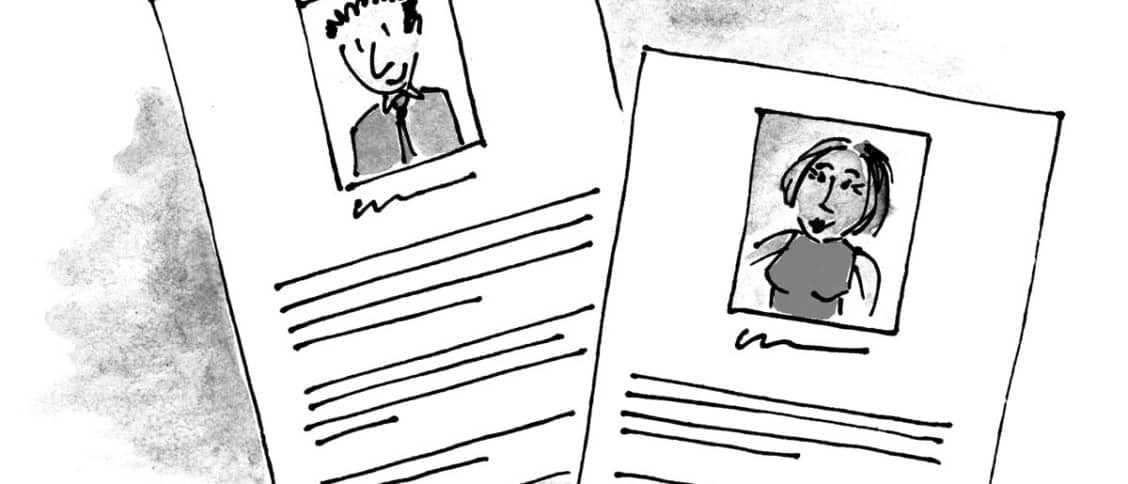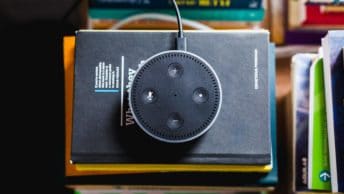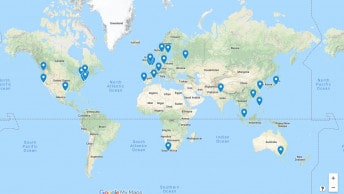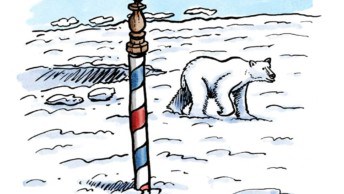A persona is a representation of a type of customer. Personas answer the question, “Who are we designing for?” and they help to align strategy and goals to specific user groups.
So how do you conduct a persona analysis? This short animated video will give you some helpful pointers.
You can begin by compiling everything you know about your customers and grouping your findings in a spreadsheet. You could use headings relevant to your areas of study, such as industry, device, time, and goals. Or you could create affinity diagrams by organizing your findings on post-it notes. You might start to see patterns—the industries in which customers work, and what devices they use, at what time of day, and where. From here, you can form questions about your customers and work out what they have in common and also how they differ.
Then find the people who form these clusters—either in your existing customer database or by recruiting them— and talk to them. It’s a win-win. You get to learn from customers and they get access to the folks who create the software they rely on. Visiting a customer is ideal. But if you can’t visit in person, a video-chat is your next best option. A persona has a personality—the more you observe and capture during these interviews, the more realistic that personality will be.
You can then tag and analyze your findings. Return to your spreadsheet or affinity diagram and add more data points—office environment, software in use, collaboration habits and so on. Look for the predominant clusters and shared attributes.
You might find that two of your personas share many characteristics. You can combine these personas. Or if there is enough distinction to warrant it, divide the persona into two. Creating personas is an iterative process. What seems right at first glance may not hold up to close scrutiny.
Now it’s time to come up with names and representations for these personas. Your representation might be a photo, an illustration or an icon. The important part is that these personas be distinct and memorable. You want your colleagues, at the mention of the Alice persona, to picture Alice and recall what she represents.
Once you’ve created your personas, you can use them to design for customers with accuracy and confidence. For example, we can say, “This is a feature that Alice would use, but one that Jim might not discover in his typical use of our app.”
Finally, share your personas with as many colleagues as possible. Create posters of your personas and hang them throughout your office. Your goal is to create a shared understanding of just who you work for and how everyone can better serve them.
Personas can give you real insights into your customers, which will your result in you designing a much better product or service. Just remember that personas change over time—create them, learn from them, share them, and then don’t forgot to revisit them and begin the process anew!






Whose idea was it to add soundtrack to this instructional video? The music is loud and distracting. One cannot concentrate on the lesson.
I’m a little unsure about the process as described above. I totally understand the need to do some initial thinking about segmentation in order to arrive at recruitment criteria. But once my interviews are done I do not think it is good practice to simply ‘iterate’ on the segments already used for recruitment.
(I may have misconstrued this part.)
I think it is very important for interview data to start as an amorphous ‘whole’ and using high level framing techniques (such as behaviours/needs/observations/technology/pain) to start clustering and then do another ‘scrape’ to work out what themes are emerging such as ‘avoiding communication’ or ‘nervous about performance’. These are far more woolly than the sort of criteria used to scope recruitment, but they help to understand human mental models and behaviours. Eventually we can draw out implications for design and decide on which of those are ACTIONABLE. This is where the art and science of personas happens. To be useful and reliable they should be 90% grounded in data… but they are not just a data dump. The skill of the designer is to judge which ‘bits’ of the data relate to context, attitude and behaviour that has implications for design, from the current experience and for a future service. Research has shown that the most effective personas are artefacts that remind stakeholders who already know users or who have participated in collecting user data about the basis for design decisions. Personas seen as principally an ‘external’ communication artefact are far less effective at convincing team members. Personas are no substitute for exposure to user data. But they serve as a helpful anchor to the user data for days, weeks and months after that data was collected.
Hi there Irith, I found your reply really insightful and I’d be keen to find out more on personas that are, as you put it “artefacts … to remind stakeholders … about the basis for design decisions” lets have a chat eh? I can be found at @expdirector (:
Hey JJ, I only just saw this :-( I will email you
Hi Gregg,
Thanks for this super insightful video.
I agree it’s very important to point out personas are part of an iterative process (people change and static personas may not be so useful after all). I’ve just one observation to add: precisely because it’s an iterative process, I find that posters hanging on office walls may not be the best way to share personas with the team.
One solution I’d suggest [FULL DISCLOSURE: I’m the product manager] is a tool called Caravel. It allows design teams to share customizable and editable personas. Moreover, they can also be integrated into the UX worflow to justify decisions in product wireframes, interfaces, etc. Feel free to look it up on Twitter @CaravelDesign
Hi, Greg! Thank you for this nice how-to. I think that Personas are such wonderful sources of insights. And they can do so much more. Not only can they help you get to know your customers, but they’re also great at improving internal communication between team members as well as making companies more customer oriented.
However, making personas on spreadsheets may work only in the beginning or for really short-term projects, because today it’s crucial to have some way to collaborate when making personas.
[self promotional link and pitch redacted by UX Mastery moderator]
Thanks, Greg!
Hello,
I’m confused about something; do you do the user interviews before or after creating personas?
Good question, Ali. Personas generally try to be a concise way of summarising for the team what we know about particular user archetypes. This means we as UXers generally need to have done some research and interviews first. However (and I think this is what you’ve picked up on) they are living documents that may go out of date if we’re not keeping tabs on the shifting archetypes. We may also have inherited them from someone, or not know or trust the data sources they were supposedly based on, so we may end up doing more interviews after the personas were first created to clarify, confirm or see if they are close to reality.